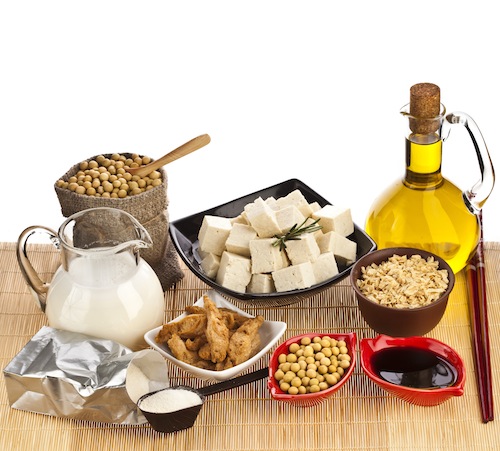When it comes to soy, the opinions are all over the map with regards to whether you should eat it liberally or steer clear. Despite the myriad of claims in recent years that soy is some sort of miracle food at least somewhat based on the health and longevity of Asian populations, I consider most soy sold in the US to be anything but a health food.
When you’re trying to conceive (especially if you’re having trouble), eliminating and restricting the amount and type of soy you eat is an important step to removing any obstacles to getting pregnant. Here I outline the reasons to consider avoiding altogether or at least being very picky about any soy you eat when you’re trying to get pregnant:
- The majority of non-organic soy in the US is genetically modified. This genetic modification renders the soybean plant resistant to the pesticide glyphosate (Roundup). The glyphosate kills weeds around the soybean plants, but doesn’t kill the soybean plants themselves.This is great for soybean producers, but not very good for your health. If you think about this logically, there isn’t anything in glyphosate that is specifically toxic to all those weeds, but won’t harm humans or other animals.In animal studies, glyphosate negatively impacts sperm quality and thus male fertility. We also don’t really know how glyphosate negatively impacts developing babies once you get pregnant.I suspect we’ll learn more as time goes on the human health effects of glyphosate, but for now the use of glyphosate on non-organic soy in the US is definitely reason enough to steer clear.
- Soy contains phytoestrogens. Phytoestrogens are a plant form of estrogen that could potentially be problematic when you’re trying to conceive by upsetting hormone balance. This is especially when eating large amounts of soy, as some vegetarians and vegan may do.The problem is that soy is not just found in the obvious sources like tofu, soy sauce, and edamame, soy is found in high protein cold cereals like Kashi’s GoLean product line, protein powders, and most popular protein bars like Balance, Clif, and Luna bars. You’ll also find soy in most meat replacement products like veggies burgers, fake chicken nuggets and meatless sausages. The form of soy in these products is “soy protein isolate.” The process of producing soy protein isolate concentrates the phytoestrogens meaning that foods with soy protein isolate are higher in phytoestrogens than whole soybeans or fermented soy foods like tempeh.The bottom line is if you’re eating high protein cereals, protein bars, and meat replacement products, it’s easy for your soy intake to add up pretty quickly. Studies on Asian populations are often cited as evidenced of the health benefits of soy, but in Asia, traditional soy foods like tempeh and tofu are eaten, not the highly processed forms found in much of the US food supply.
- Soybeans are also very rich sources of fiber and phytic acid. The high fiber content of soybeans means that many of the nutrients from straight soybeans (think edamame) are not very well absorbed as fiber is really good at binding up minerals like calcium, zinc, and magnesium. Phytic acid is a naturally occurring chemical in legumes, whole grains, and nuts and seeds. Like fiber, phytic acid binds up minerals preventing their absorption. The soaking of beans or nuts releases phytic acid into the water to make the beans more digestible. The fermentation process also breaks down phytic acid, making fermented soy products that much more beneficial than their unfermented counterparts. Overall, the news isn’t all bad for soy, as organic and fermented soy products have digestible and absorbable nutrients.
What to Look For
Avoid any foods with non-organic soy, as they have likely been treated with glyphosate. When reading labels, look for “soy protein isolate” or “soy flour” or “texturized vegetable protein” and leave these products on the shelf. Check cereals, protein bars and powders, and all meat replacement products for these ingredients, and steer clear of soy milk, soy yogurt, and soy cheese.
Is there any Soy that’s Safe?
Tempeh, natto, and miso are all fermented soy products that can be incorporated into your diet a few times per week. Organic tofu is also a reasonable option, but again on a limited basis.

1 Response to "Should Soy Be a Part of Your Fertility Diet?"
[…] say that I don’t usually recommend soy milk for the reasons I outline in a previous post. Almond and coconut milk can be good options as a dairy substitute as long as you pay attention to […]